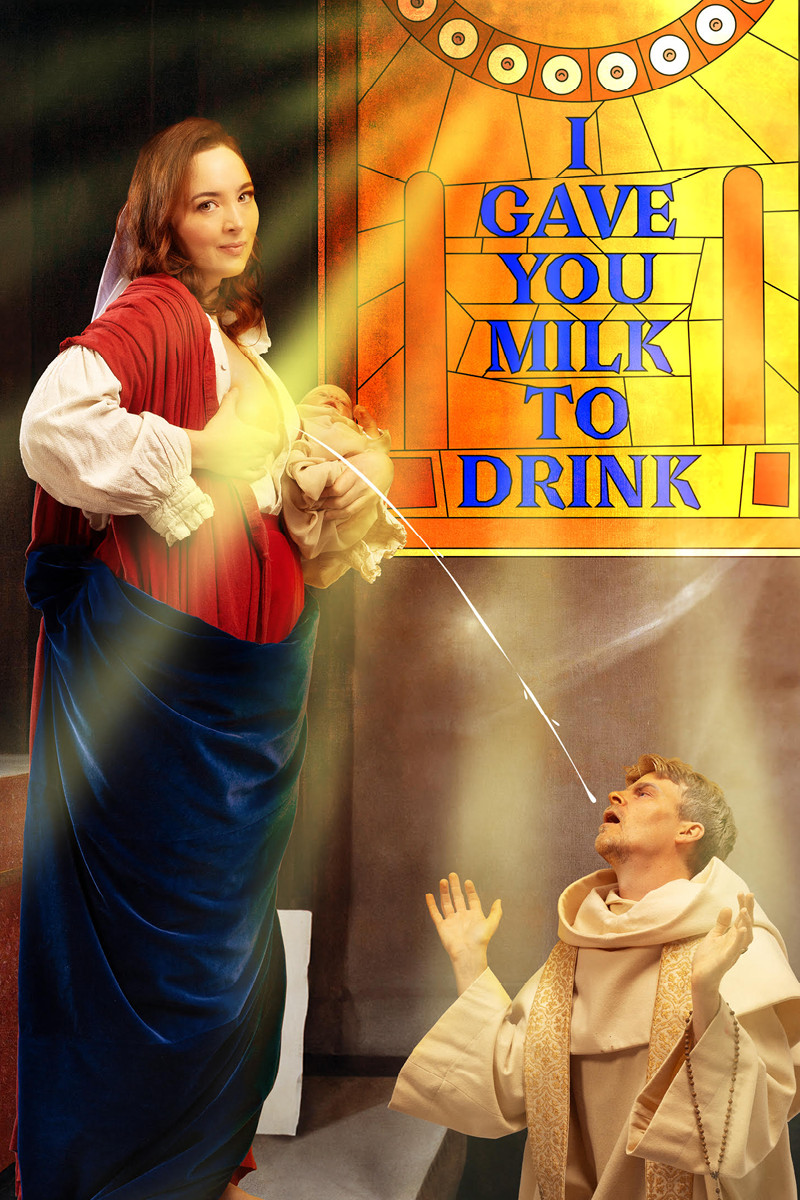Professor Russell Sandberg: The strange afterlife of blasphemy

Pictured: Fern Brady's banned poster.
Professor Russell Sandberg suggests legal sanctions for blasphemy continue to exist in Britain following a ruling against comedian Fern Brady.
The criminal offence of blasphemy is dead in England and Wales. It was unceremoniously abolished by section 79(1) of the Criminal Justice and Immigration Act 2008. My colleague Norman Doe and I wrote a piece entitled The Strange Death of Blasphemy, which looked at events leading up to its abolition. The offence is now long dead.
Yet as we mentioned in the conclusion to that piece, in some respects blasphemy, or at least blasphemy-like provisions, live on. There, we speculated on how other criminal law offences provided some degree of protection on grounds of religion. In addition to this, other non-criminal provisions are rather blasphemy-like, such as rules and guidelines that regulate the media and advertising.
A recent ruling of the Advertising Standards Authority (ASA) provides a stark and worrying example of this.
The ruling concerned an advertisement for a tour by comedian Fern Brady on the Sky News website. The advert included a photo that parodied a painting, The Lactation of St Bernard. While the original showed the Virgin Mary nursing St Bernard by spraying milk from her breast into his mouth, Brady’s version showed her in the Virgin Mary pose, though covered her breast with a beam of light, and included the title of her tour show, ‘I Gave You Milk To Drink’.
The ASA noted that “The intention was not to mock or belittle the original religious significance, but to offer a contemporary interpretation that aligned with her public personal as a comedian known for her irreverent style and her religious upbringing”. Nevertheless, the ASA upheld the complaint, holding that it “was likely to be seen as mocking the religious figures shown” and was therefore “likely to cause serious offence to some within the Christian faith who saw the ad on their site”.
This censorship not only offends free speech but also shows how the extra-legal regulation of the ASA goes further than the offence of blasphemy ever did. This may be justified, of course, in terms of blasphemy being a criminal offence. However, a comparison of the two is instructive and chilling.
The ASA examined Article 4.1 of the Committee of Advertising Practice’s UK Code of Non-Broadcast and Direct & Promotional Marketing (known as the CAP Code). This provides that “Marketing communications must not contain anything that is likely to cause serious or widespread offence” and gives a list of grounds upon which particular care must be taken to avoid causing offence, including “religion or belief”.
This is a much lower threshold than existed under the law of blasphemy, as shown by the last reported case on that offence, Green v The City of Westminster Magistrates’ Court [2007] EWHC (Admin) 2785. That case concerned an unsuccessful judicial review of the refusal to issue a summons against the play Jerry Springer: The Opera, which involved guests from the talk show appearing in the second act in the guise of a number of religious figures, including the Virgin Mary. The High Court was adamant that
“the gist of blasphemous libel is material relating to the Christian religion, or its figures or formularies, so scurrilous and offensive in manner that it undermines society generally, by endangering the peace, depraving public morality, shaking the fabric of society or tending to be a cause of civil strife” [16].
The judgment continued: “This element will not be shown merely because some people of particular sensibility are, because deeply offended, moved to protest”.
It seems clear, therefore, that the Brady advertisement, like Jerry Springer: The Opera, would not have been blasphemous. It is all the more concerning that the threshold seems significantly lower under the ASA. Causing “serious or widespread” offence is much easier to prove than something so offensive that it undermines society generally.
However, further examination of Article 4.1 of CAP suggests that the ASA’s decision is curious. Article 4.1 also states that:
- “Compliance will be judged on the context, medium, audience, product and prevailing standards”;
- “Marketing communications may be distasteful without necessarily breaching this rule”; and
- “The fact that a product is offensive to some people is not grounds for finding a marketing communication in breach of the Code”.
It is questionable how the ruling can be reconciled with some of these statements.
The ASA concluded that Brady’s advert “must not appear again in the firm complained of, in media in which it was likely to cause serious offence”. It also “told Fern Brady to take care not to cause offence on grounds of religion in future ads”.
Regardless of what may be thought of the advert, this adjudication sets a deeply troubling precedent. The offence of blasphemy is long dead, but soft law provisions that have a much lower threshold than blasphemy laws ever did are, it seems, very much alive.
Professor Russell Sandberg is a professor of law at Cardiff University. This article first appeared on the Law & Religion UK blog.









